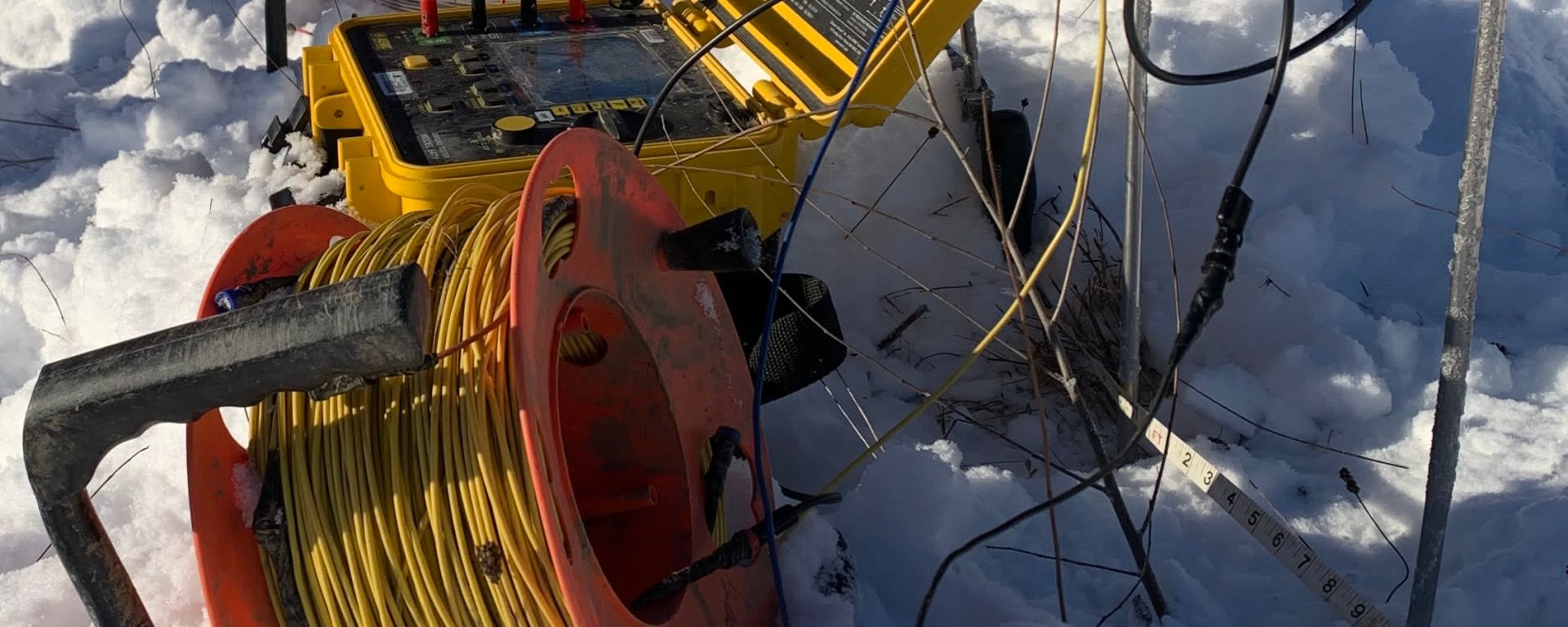Important soil tests happen along Hurontario LRT route
Crews are using math and special devices to look at how electrical currents move through the earth.
Feb 25, 2021
It was the small yellow box, with wires attached to metal poles stuck through the snow into the frosty ground, that had us wondering.
Recently images from the Hurontario Light Rail Transit (HuLRT) project included photos of trucks clearing medians along Hurontario and crews moving utilities. But there were also a couple that showed small teams huddled, in the snow, around the yellow boxes. The pictures simply said ‘soil resistivity test’ – which has us wondering.
Soil resistivity testing in north Mississauga. (Metrolinx photo)
The explanation is an interesting bit of science, you likely wouldn’t know about or appreciate if you were driving past HuLRT workers and their little yellow box with its many wires.
The resistivity tests measure how much the soil at each location resists or conducts electric current. These test results are critical to the project, helping with the overall design of the electrical grounding for the 13 Traction Power Substations (TPSS) that will be built to feed the LRT line.
Remember, the transit route will run on electricity.
The resistivity, experts explain, is an indication of a given soil’s ability to carry electric current. Crews need to know the electrical resistivity of the soil under the TPSS so the design team can complete the electrical grounding – what they call ‘Earthing’ – design of each TPSS facility. Four earth ground stakes are positioned in the soil in a straight line, and equal distance from one another. The distance between earth ground stakes is at least three times greater than the stake’s depth.
Even out in the sold and snow, COVID measures are taken during the testing. (Metrolinx image)
An Earth Resistance Tester is then connected to these four stakes and the soil resistivity level is found using a specific formula.
We just thought it was it was an interesting piece of hidden science, that’s important to a major transit project.
Bonus points for the formula
And not that you’ll likely ever need it to impress your friends, there’s even a formula that goes along with this. If we have it correct, it goes like this:
- The DC test option on the tester is selected and performed, and the resistance figure R recorded.
- The soil resistivity level r in ohms/cm is then found out using the formula: r = 2 ρaR
- Where: R = the resistance figure (in ohms), a = the separation of the test stakes, in metres.
Somewhere, our old high school science teacher is beaming with a proud smile.
And about the utility relocations – they continue in the Mississauga North area as crews work to remove and relocate existing utilities away from where the new LRT line is being constructed.
Crews work on utility excavation in Mississauga. (Metrolinx photo)
